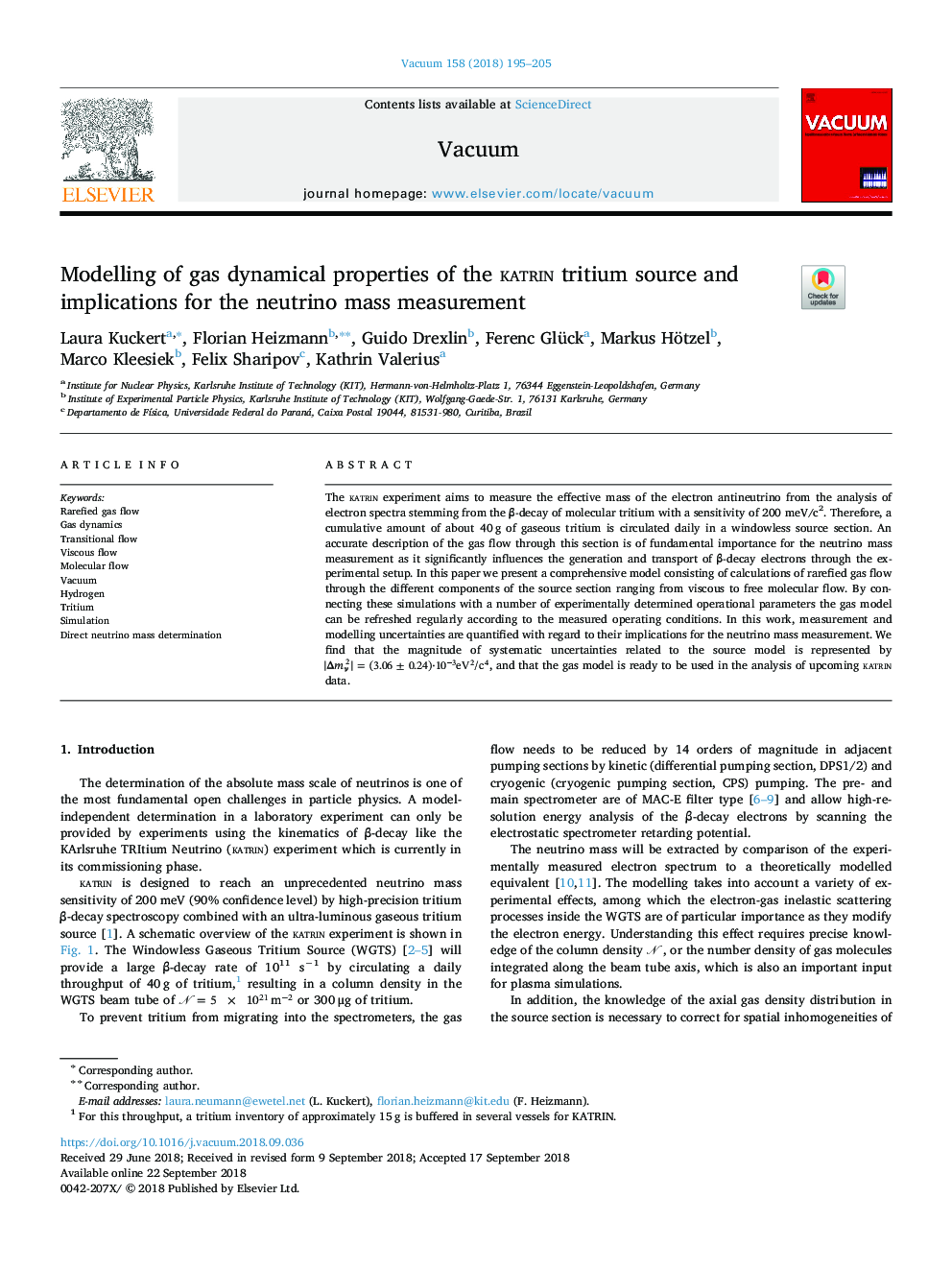| Article ID | Journal | Published Year | Pages | File Type |
|---|---|---|---|---|
| 11026534 | Vacuum | 2018 | 11 Pages |
Abstract
The Katrin experiment aims to measure the effective mass of the electron antineutrino from the analysis of electron spectra stemming from the β-decay of molecular tritium with a sensitivity of 200 meV/c2. Therefore, a cumulative amount of about 40â¯g of gaseous tritium is circulated daily in a windowless source section. An accurate description of the gas flow through this section is of fundamental importance for the neutrino mass measurement as it significantly influences the generation and transport of β-decay electrons through the experimental setup. In this paper we present a comprehensive model consisting of calculations of rarefied gas flow through the different components of the source section ranging from viscous to free molecular flow. By connecting these simulations with a number of experimentally determined operational parameters the gas model can be refreshed regularly according to the measured operating conditions. In this work, measurement and modelling uncertainties are quantified with regard to their implications for the neutrino mass measurement. We find that the magnitude of systematic uncertainties related to the source model is represented by |Îmν2|=(3.06±0.24)â
10â3eV2/c4, and that the gas model is ready to be used in the analysis of upcoming Katrin data.
Keywords
Related Topics
Physical Sciences and Engineering
Materials Science
Surfaces, Coatings and Films
Authors
Laura Kuckert, Florian Heizmann, Guido Drexlin, Ferenc Glück, Markus Hötzel, Marco Kleesiek, Felix Sharipov, Kathrin Valerius,
